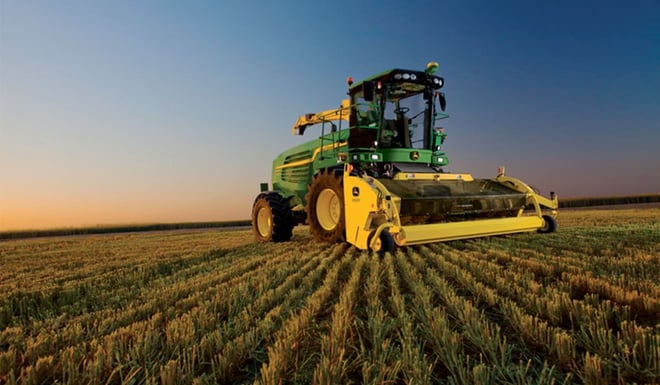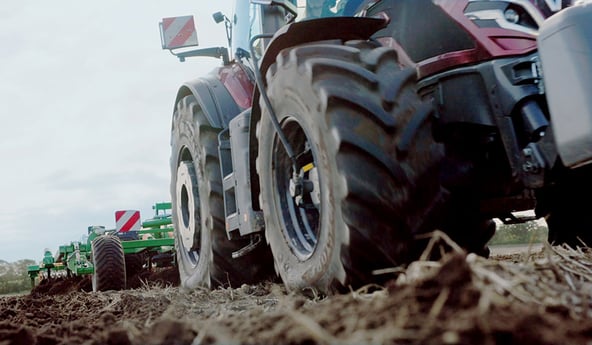The harvesting period often sees an increase in the traffic of heavy machinery in your fields, the combine harvesters and the comings and goings of loaded trailers generate soil compaction which can be severe.
The catch crops will have very little impact on overly compacted soil and the solution is deep groundwork, with tilling being the optimal solution.
ever, for this work to be effective and lasting, you must do it in the best conditions, see how:
How to determine if your soil has been subjected to excessive compacting?
All analyses as well as the tilling work must be carried out on dried out soil,in other words soil that has been drained of excess water. If the soil is too wet, you’ll need to wait for a few days without rain, this is why the end of the summer is generally the moist suitable period: the soil has dried out during August and has just seen a few storms which provide a suitable level of moisture.
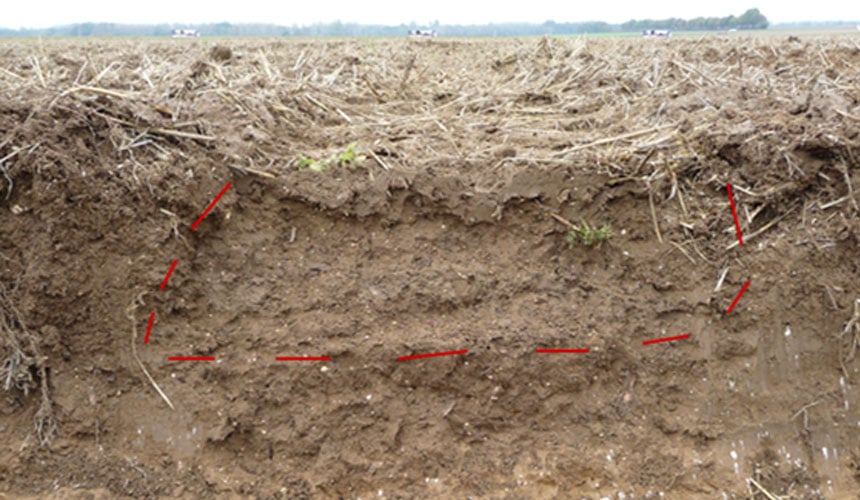 To determine if your soil has been compacted excessively, you can carry out a simple soil sample test. Take a block of soil of around 40cm thick from your field to determine if the earth is clumped together in clods or if it is fragmented.
To determine if your soil has been compacted excessively, you can carry out a simple soil sample test. Take a block of soil of around 40cm thick from your field to determine if the earth is clumped together in clods or if it is fragmented.
Break down the clods by hand to determine their porosity: if the clumps separate easily into small crumbly pieces, the soil is not compacted, however if it breaks cleanly into smooth pieces this is a sign of severe compacting which will prevent water from being absorbed correctly into the soil and therefore block root development. If you can remove full plants, you will see that in case of compaction, most roots will have developed horizontally rather than vertically.
What are the best solutions for aerating the soil?
» Harrowing
After harvesting, it enables you to work the upper layer of your land to bury straw residues and ensure that they decompose. There is however a drawback, which is that during dry periods, it produces a soil that is fine and ideal for sewing but will tend to compact more easily.
It will not be enough to restructure your soil deep down after the use of heavy machinery, combines, tractors and trailers.
» Ploughing
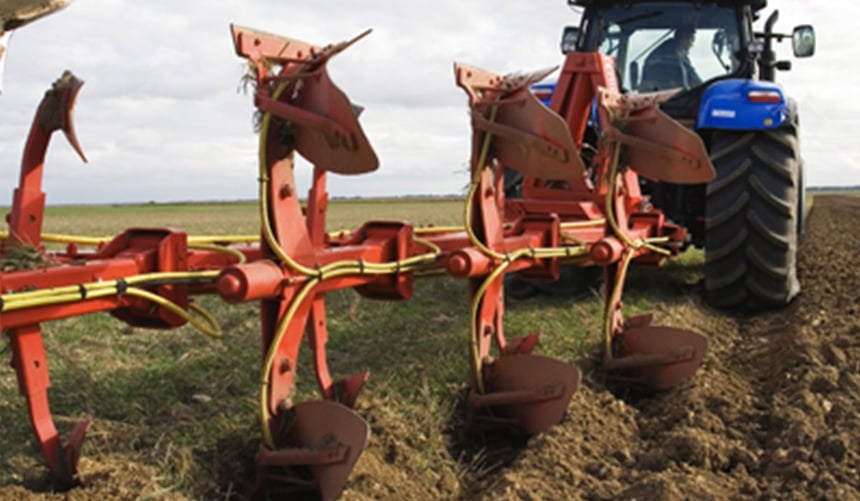
This enables you to aerate the upper layers of the soil, but it turns the topsoil and buries plant debris at a constant depth of 20 to 25 cm, which may produce a compact hardpan at this level which would block the flow of water and roots, reduce biological soil activity and therefore lessen your yield.
To preserve your soil and guarantee a better yield, you must ensure that the soil is not over compacted beneath the ploughing layer, which is between 25 to 40 cm deep.
To really avoid deep soil compaction, you need to carry out a deep aerating process. But be careful, this process must be carried out on perfectly drained but not overly dry soil to provide the best results.
» Aerator
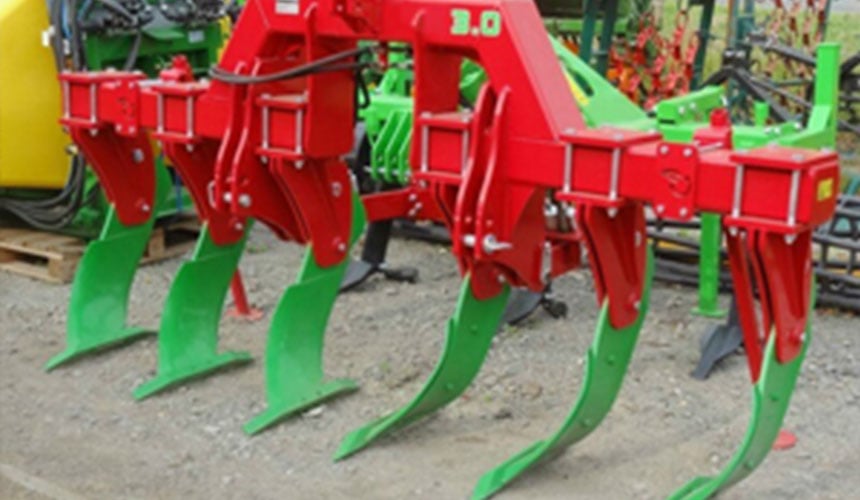
Contrary to the plough which turns the earth over, the aerator just splits the earth’s lower layers without turning it. This enables you to aerate the soil by lifting it, it breaks down the hardpan enabling the roots to penetrate the soil and to develop more deeply and allows water to infiltrate to provide a more readily available stock of moisture.
Using the aerator combined with a rotating harrow will prepare your soil while reducing your fuel consumption.
The easiest solution for soil compaction is to consider that prevention is better than cure, through the use of low-pressure vf tyres
Reducing soil compaction should be a priority as it impacts your yield. By equipping your harvesting equipment and tractors with VF tyres, you will avoid the aerator stage and keep your soil in permanent good condition.
1. VF tractor tyres protect your soil
Contrary to standard tyres, the VF casing can be used at as low as 0.8 bar while a standard agricultural tyre cannot be used below 1.2 bar. With the advantage of this lower pressure, the VF tyre limits soil compaction, allowing the footprint to be better distributed and reducing spinning.
With this type of tyre, which is not bigger than a standard tyre, the footprint will be larger, generating additional traction, fewer ruts and therefore less work required to restore the field..
2. VF technology tyres can carry a much heavier load
An IF tyre can carry up to 20% more load than a standard tyre and the VF tyre will be capable of carrying up to 40% more weight, without increasing soil compaction.
3. They guarantee better productivity
Low pressure tyres, larger footprint, higher agricultural tyre index… QED, VF agricultural tyres therefore guarantee increased productivity. Trials and field tests have shown that these technological tyres allow you to work more hectares in one day. In addition to increased productivity, fuel consumption is reduced and soil preservation assured by avoiding difficult and time consuming decompaction.
To take it one step further and increase the profitability of your farm, bridgestone-agriculture.eu provides a free, highly detailed eBook which explains the essential role of the agricultural tyre in your productivity.
The bridgestone-agriculture.eu blog is written by agricultural tyre experts who are available to provide you with the advice you need to maximise your productivity (How to ballast your tractor tyres - Technical data for agricultural tyres - Agricultural tyre performance - Pressure advice for agricultural tyres - Soil compaction solutions - Sprayer tyre pressure, etc.)
Most people who read this article have also read some of the following articles:
- 9 major points on soil compaction linked to tractor tyres
- What you need to know about soil compaction caused by your tractor tyres
- Protect your soil during harvest for successful sowing in the future
- What are the consequences of the soil compaction caused by my tractor tyres?
- 3 soil conditions to understand to avoid compaction by your tractor tyres
- What type of farming tyre is best for preventing ruts?
This information is intended only to make you aware of the technical and functional aspects of agricultural tires and their use. It does not allow you to make a judgment or a definitive conclusion on a given problem. Only your agricultural tire expert is able to make a technical assessment and take a final decision, case by case.
Leave a
commentary
Your email address will not be published.
Required fields are indicated with *


